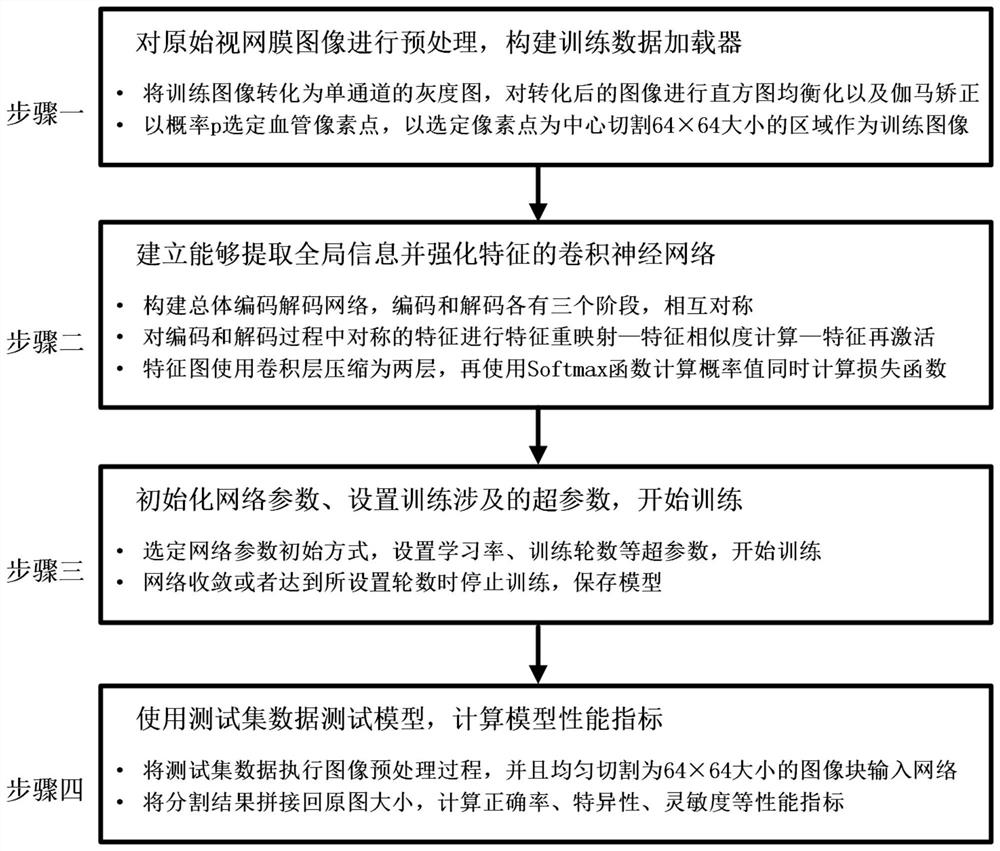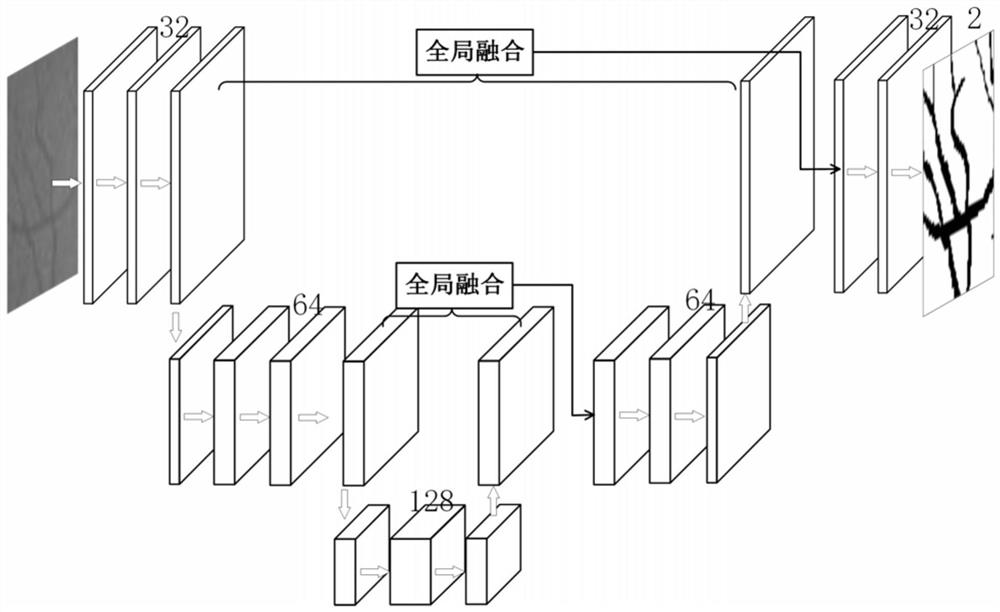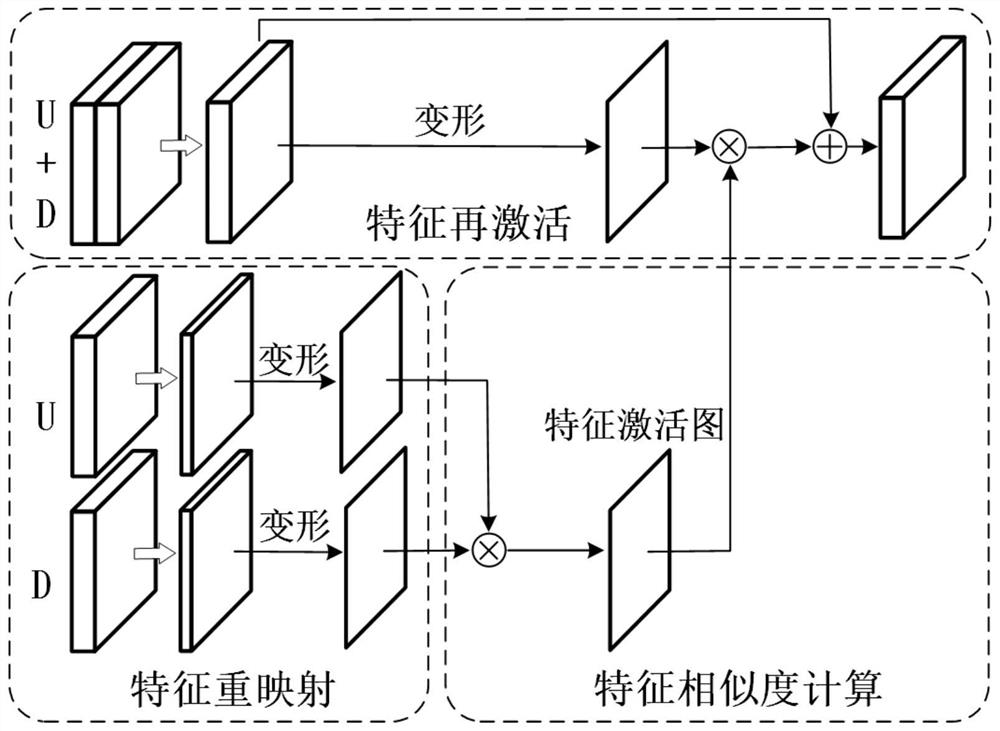Retinal Vascular Image Segmentation System Based on Global Information Convolutional Neural Network
A convolutional neural network and retinal blood vessel technology, applied in the field of medical image processing, can solve the problems of limited use of global information and easy loss of important features, and achieve good universality and good performance.
- Summary
- Abstract
- Description
- Claims
- Application Information
AI Technical Summary
Problems solved by technology
Method used
Image
Examples
specific Embodiment approach 1
[0024] Specific Embodiment 1: In this embodiment, the retinal vessel image segmentation system based on the global information convolutional neural network includes:
specific Embodiment approach
[0026] The DRIVE public dataset contains 40 color retinal images, 7 of which are lesion images; all fundus images in DRIVE have a resolution of 565×584 pixels; the dataset is evenly divided into a training set and a test set;
[0027] Preprocess the original retinal image and build a training data loader;
[0028] Establish a convolutional neural network that can extract global information and strengthen features. The overall network structure uses the framework of encoding first and then decoding. During the decoding process, the feature map is remapped → feature similarity calculation → feature reactivation to complete the global Integration of information and enhancement of vulnerable features;
[0029] Initialize network parameters, set hyperparameters involved in training neural network locks, and start training;
[0030] Use the trained model to test and calculate performance metrics;
[0031] The flow chart of the present invention is as figure 1 As shown, the detail...
specific Embodiment approach 2
[0037] Specific embodiment 2: The difference between this embodiment and specific embodiment 1 is that the image processing main module is used to collect the original retinal image, preprocess the collected original retinal image, obtain the processed image, and preprocess the The final image is input to the training main module and the detection main module; the specific process is:
[0038] The DRIVE public dataset contains 40 color retinal images, 7 of which are lesion images; all fundus images in DRIVE have a resolution of 565×584 pixels; the dataset is evenly divided into a training set and a test set;
[0039] A1. Obtain training data and read 20 images of the training set. These 20 images are RGB three-channel color images, and these 20 training images are converted into single-channel grayscale images. For the converted image retinal background and For the problem that the contrast between blood vessels is not obvious enough, perform histogram equalization on the conv...
PUM
 Login to View More
Login to View More Abstract
Description
Claims
Application Information
 Login to View More
Login to View More - R&D
- Intellectual Property
- Life Sciences
- Materials
- Tech Scout
- Unparalleled Data Quality
- Higher Quality Content
- 60% Fewer Hallucinations
Browse by: Latest US Patents, China's latest patents, Technical Efficacy Thesaurus, Application Domain, Technology Topic, Popular Technical Reports.
© 2025 PatSnap. All rights reserved.Legal|Privacy policy|Modern Slavery Act Transparency Statement|Sitemap|About US| Contact US: help@patsnap.com



